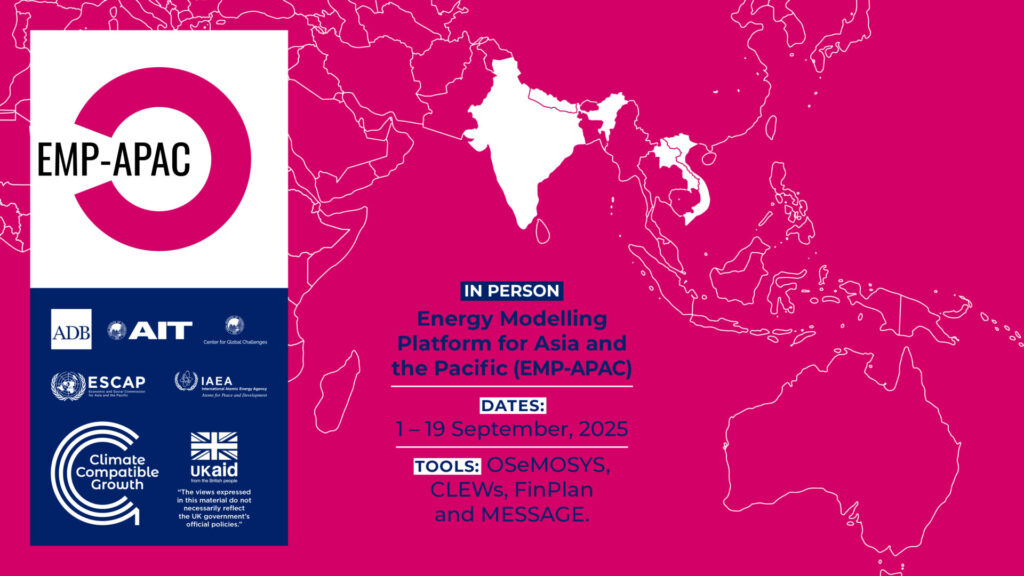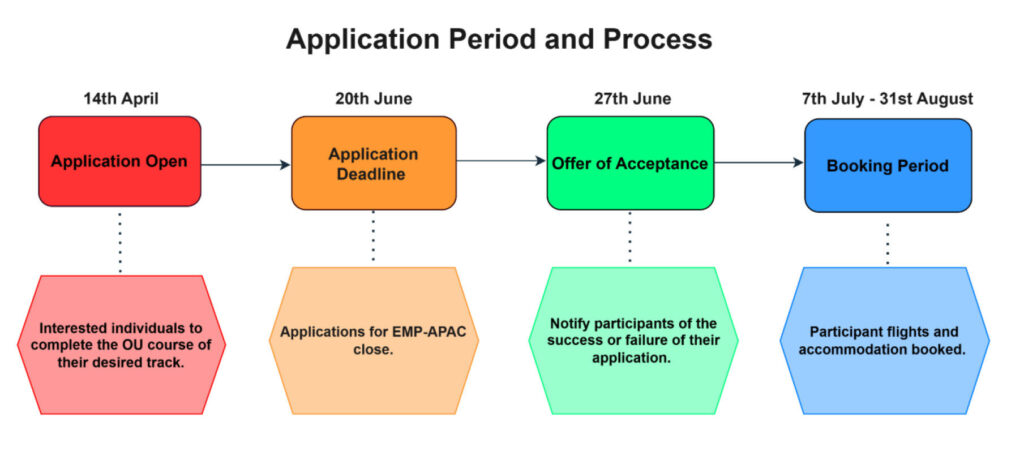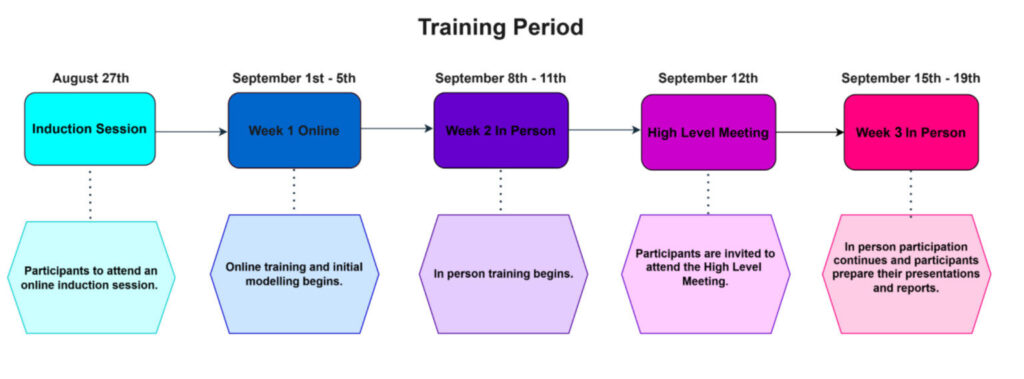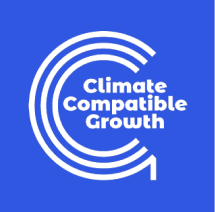This is the first ever Energy Modelling Platform for Asia and the Pacific (EMP-APAC) following on from twelve rounds of EMP globally. Nearly all Asia-Pacific countries have included renewable power generation in their Nationally Determined Contributions (NDCs) to climate action under the Paris Agreement. This focus, combined with the region’s abundant renewable resources (such as wind and solar), and the urgent need to mobilise investments to support sustainable growth means that strategic assessment and planning are absolutely vital. Using country-specific data and open-source energy modelling tools provides the factual basis for these assessments. The EMP will give you the skills you need to do this, and train a new generation of energy modellers in the Asia-Pacific Region

There is no fee to attend; however, competition for places is high. Funding is also available for flights and accommodation.
Although EMP-APAC acknowledges that different countries and regions within Asia-Pacific will require context-specific approaches, the overarching objectives of the platform are to:
- Gather the energy planning and modelling community in Asia-Pacific to share experiences, models, and data in climate, land, energy, and water systems.
- Support human and institutional capacity in Asia-Pacific for integrated energy modelling and investment planning.
- Support the development of centres of excellence for energy planning in Asia-Pacific.
- Promote efficient and widespread use of (cost free) open-source modelling tools to support the implementation of the SDGs, the Paris Agreement, and Asian Development Bank’s Vision 2030
EMP-APAC 2025 will take place 1–19 September 2025 and is an in-person event (the first week is online only), taking place at the Asian Institute of Technology (AIT) in Bangkok, Thailand.
The full concept note is available for download here
There are now seven courses available as part of this EMP. See below for details.
How to Apply
As part of the application, you will need to complete the Open University course for the tool you wish to be trained in.
For example: if you would like to apply for OSeMOSYS and FlexTool, you would need to complete the course on the Open University website for OSeMOSYS and FlexTool.
Once completed, you will receive a certificate from the Open University. The certificate must be attached to your application form.
All the courses are available free via the Open University (OU) [Links open in a new tab].
- Energy System Modelling using OSeMOSYS
- FINPLAN (Financial Planning of Energy Infrastructure) and Investment Pipelines (also available in French)
- MAED (Model for Analysis of Energy Demand)
- Introduction to CLEWS: Climate, Land-Use, Energy and Water Systems (also available in French)
- Input-Output-based Life-Cycle Assessment with MARIO
- Electricity Transition Playbook*
Application Period:
14 April 2025 to 20 June 2025

- 14 April 2025 – Applications open. Interested individuals should start the OU course to complete it before the application deadline
- 20 June 2025 – Application deadline at 12pm GMT.
- 27 June 2025 – Participants are notified of whether their application was successful or not
- 7 July to 31 August 2025 – Participant flights and accommodation are booked and visa letters are sent.
When you complete your application – USING THE LINK AT THE BOTTOM OF THIS PAGE – you must attach the following:
- A certificate of completion for the respective Open University course
- A certificate of completion for ‘Modelling, policy and political economy‘, a free Open University course. [all applicants]
- A stamped Letter of Commitment, which stipulates an express statement from your institution towards attendance for the module of choice. This letter must demonstrate that the output of your study is in demand by government/is policy-relevant research or that the skills you acquire will be used in university teaching/government planning. [All applicants]
- A Letter of Motivation in which you state why you should be selected for the course, and why your background knowledge and experience makes you ideal for the course.
Training Period
The courses are split into two parts:
Self-paced study: You complete an OU course of your choice and attach the certificate of completion. Once accepted and on the EMP-APAC, there is an induction session followed by Week 1 which is conducted online.
In-depth hands-on training: Weeks 2 and 3 (1–19 September) is in-person, interactive, and with dedicated trainers*. The coaching will help you develop a national case study, which you will then present as an ‘elevator pitch’ to a senior decision-maker.

- Induction Session, 27 August, online
Information about how the event should be approached and the importance of modelling and its applications. - Week 1 of training, 1–5 September, online
Online training and initial modelling begins - Week 2 of training, 8–11 September, in-person
In-person training begins: includes a high-level meeting 12 September - Week 3 of training, 15–19 September, in-person*
In-person training concludes
* Note: the Electricity Transition Playbook course is an in-person course lasting one week only, and will take place during week 2 of the training.
Application Form
***Please follow this link to apply. [opens in new tab]***
Please note, you will need to submit all the required documents for your application to be successful. Applicants will need to have stable internet access to participate in training, and a relatively new computer (with at least 8 GB of RAM). Some courses have additional requirements.
If you have any questions about any part of the EMP-APAC please get in touch with OpTIMUS Inquiries.
Partners

In alphabetical order:
- 2050 Pathways Platform
- Asian Institute of Technology (AIT)
- Asian Development Bank (ADB)
- Centre for Global Equality
- Clean Cooking Alliance
- Climate Compatible Growth Programme (CCG)
- Department of Energy Security and Net Zero (DESNZ)
- United Nations Economic and Social Commission for Asia and the Pacific (UNESCAP)
- Energy Sector Management Assistance Program (ESMAP)
- Green Grid Initiative (GGI)
- International Atomic Energy Agency (IAEA)
- International Renewable Energy Agency (IRENA)
- Imperial College London (ICL)
- Kartoza
- KTH Royal Institute of Technology (KTH)
- Open University
- OpTIMUS Community of Practice
- Politecnico Di Milano
- Simon Fraser University
- Sustainable Energy for All (SEforALL)
- STEER (University of Loughborough Centre for Sustainable Transitions: Energy, Environment, and Resilience)
- United Kingdom Foreign, Commonwealth and Development Office (UK FCDO)
- United Nations Department of Economic and Social Affairs (UN DESA)
- United Nations Development Programme (UNDP)
- United Nations Economic Commission for Africa (UNECA)
- University of Cambridge
- University of Oxford
- World Resources Institute (WRI)
- World Bank Group (WBG)
